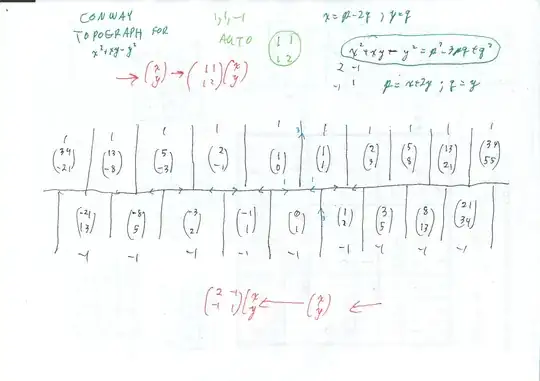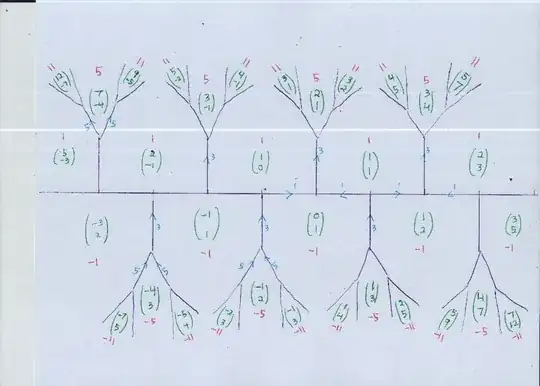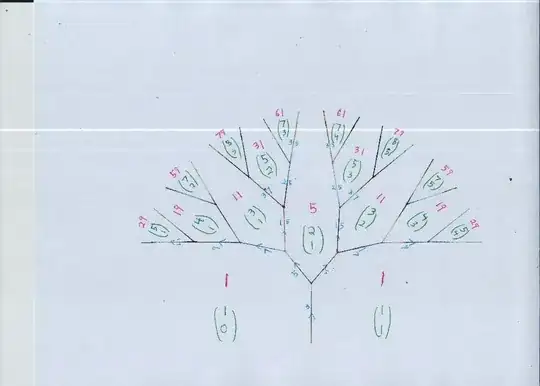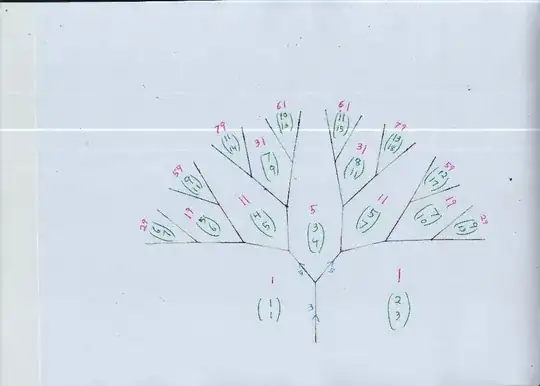Here's one approach:
Step 1a: Show that if $a$ and $b$ satisfy this, and $0 < a < b$, then $a' = (b-a)$ and $b' = a$ also satisfy it and have $a' \le b' < b$, so that the max absolute value of the two items in the pair decreases
What the heck...let's check that: we want to show that $(b' - a') (b' + a') - (a'b' -1)
$ is zero. So compute
\begin{align}
(b' - a') (b' + a') - (a'b' -1)
&=(a - (b-a)) (a + (b-a)) - (a(b-a) -1)\\
&=(2a - b)) (b)) - (a(b-a) -1)\\
&=2ab - b^2 - ab + a^2 +1 \\
&=ab - b^2 + a^2 +1
\end{align}
which is $0$ because $a$ and $b$ satisfy the relation, which expanded out says that $b^2 - a^2 - ab + 1 = 0$.
Case 1b: if $b < a < 0$, then $b' = b-a$ and $a' = b$ do as well, and $b' < a' < 0$, and $|b'| = |a| < |b|$. Proof: exactly the same as before. Once again, the max absolute value of the two items in the pair decreases.
Case 1c: $b$ and $a$ have opposite signs. If $b$ is positive, then $a$ is negative, and $|a| > |b|$. If $b$ is negative, then $a$ is positive, so $b-a$ is negative, so $b+a$ is positive, and once again $|a| > |b|$. Again, by an argument like the one above, the pair $(a, b)$ can be adjusted to a pair $(b, a-b)$ where the larger number (in absolute value) is smaller in the new pair than in the old one, i.e., the max absolute value of the two items in the pair decreases.
Other cases: you still have to deal with other similar cases in ways rather like this, and I don't have the stomach to go through it all.
Step 2: Conclude that for any such pair, we can reduce the pair to a smaller (in the sense of max-absolute-value) pair of numbers, until until $a = b$ (which fails unless $a = b = \pm 1$).
Step 3: Conclude that our pair is part of the sequence that arises from
$(1, 1) \to (1, 2) \to (2, 3) \to (3, 5) \to ...$, i.e., the F-sequence.
[This does only handle the case where $0 < a < b$; the $a=b$ case is trivial (indeed, Step 2 addresses it); the $a > b$ case can almost certainly be handled by essentially the same method. The case where $a$ or $b$ is zero should not be difficult for a bright high-school student.]



